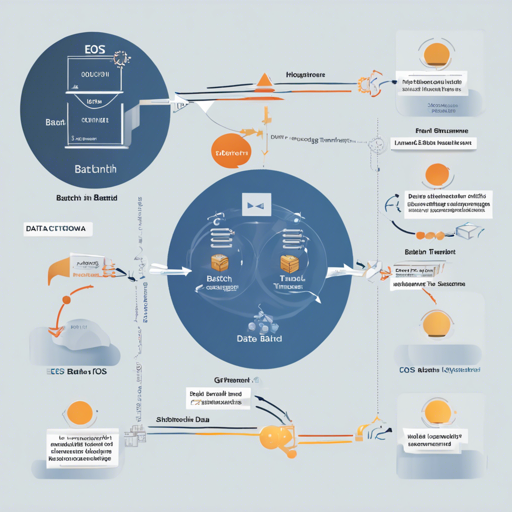In the ever-evolving realm of blockchain and decentralized applications, understanding how to perform batch transfers in EOS can set you apart from the crowd. Whether you are transferring assets, implementing smart contracts, or just being part of the crypto ecosystem, mastering this skill is invaluable. Let’s delve into how to manage EOS batch transfers smoothly!
Understanding the EOS Batch Transfer
At its core, a batch transfer in EOS involves transferring assets to multiple accounts simultaneously. Think of it like distributing a pizza among friends: instead of cutting and serving each slice one by one, you simply cut it into multiple slices and hand them out all at once! This not only saves time but also optimizes resources, ensuring everyone gets their fair share quickly.
Implementing Batch Transfers in C++
To execute a batch transfer in EOS using C++, you can create a structure to represent the accounts involved and a function to perform the transfers. Here’s a simplified overview of how it works:
typedef struct acnts {
account_name name0;
account_name name1;
account_name name2;
account_name name3;
} account_names;
void batchtransfer(symbol_name symbol, account_name from, account_names to, uint64_t balance) {
require_auth(from);
...
// ensuring the transfer amount is valid
eosio_assert(is_balance_within_range(balance), invalid balance);
...
sub_balance(symbol, from, amount);
add_balance(symbol, to.name0, balance);
add_balance(symbol, to.name1, balance);
add_balance(symbol, to.name2, balance);
add_balance(symbol, to.name3, balance);
}- Account Structure: Each account to receive assets is represented as an item in the `account_names` structure.
- Function Execution: The `batchtransfer` function performs necessary checks, like ensuring the sender has sufficient balance and the transfer amount is positive.
- Efficient Transfers: Instead of individual transfers, the function executes multiple `add_balance` calls to transfer to all accounts at once.
Troubleshooting Common Issues
As you navigate through batch transfers, you might run into some common roadblocks. Here are a few troubleshooting tips:
- Insufficient Balance Errors: Make sure the account from which you are transferring has enough balance to cover all outgoing transfers.
- Recipient Not Found: Check that all recipient accounts are valid and exist on the EOS blockchain.
- Adjust Transfer Amounts: Ensure that you’re not trying to transfer more assets than the sender holds.
- Debugging Assertions: Utilize
eosio_asserteffectively to catch errors during the transfer process.
For more insights, updates, or to collaborate on AI development projects, stay connected with fxis.ai.
Conclusion
Batch transfers in EOS not only streamline the process of asset allocation but also enhance efficiency for users dealing with multiple transactions. By leveraging the right C++ code and understanding the underlying logic, you can master this functionality with ease.
At fxis.ai, we believe that such advancements are crucial for the future of AI, as they enable more comprehensive and effective solutions. Our team is continually exploring new methodologies to push the envelope in artificial intelligence, ensuring that our clients benefit from the latest technological innovations.

